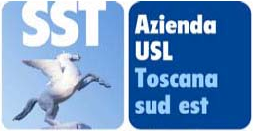Guide for using the Whole Body Vibration Database
The purpose of the Vibration Database is to
-
Ensure an easy retrieval of the values of exposure to vibration produced by widely used industrial equipment, in order to promote, as much as possible, the immediate implementation of interventions aimed at reducing the risk at source yet during the process of risk assessment, without having to recur to measures that can be expensive and complex. Indeed, the analysis of the possibilities of risk reduction, besides being a specific duty resulting from risk assessment in the case where the action levels are exceeded, represents an integral part of the risk characterisation and assessment process set down by the regulations. In this context, it is expressly stated by the regulations that a particular attention should be given, when carrying out the risk assessment, to "information provided by the manufacturers of work equipment in accordance with the relevant Community Directives".
-
Allow the employers and their consultants to identify the equipment that reduce to a minimum the risk arising from exposure to mechanical vibration, when purchasing new machinery or replacing the obsolete one.
-
Support the manufacturers in designing and producing new equipment in full compliance with the Machinery Directive, as stated under section 1.5.9 (“Vibrations”), that reads as follows:
“Machinery must be designed and constructed in such a way that risks resulting from vibrations produced by the machinery are reduced to the lowest level, taking account of technical progress and the availability of means of reducing vibration, in particular at source.The level of vibration emission may be assessed with reference to comparative emission data for similar machinery”.
The database is accessible separately for hand-arm transmitted vibrations (HAV) and whole body vibrations (WBV). Each machine has a link to a technical sheet, which provides a number of basic information such as: brand, model, type of power supply, power, weight, etc., a picture of the machine itself and two types of vibration exposure data: those declared by the manufacturer within the meaning the Machinery Directive (if available) and the field-collected data (if available) obtained by following specific measurement protocols that ensure the control of the uncertainty of results. In this case, the field measurement conditions and the contact person for the measurement are specified as well. The value reported in the database represents the mean of at least three repeated measurements performed on that machine under the operating conditions indicated on the sheet.
VIBRATION DATABASE: INDICATIONS FOR A CORRECT USE
The database provides two types of data:
- The emission values declared by the manufacturer within the meaning of the Machinery Directive;
- The vibration values measured in field in accordance with specific international measurement standards.
Values declared by the manufacturer
Both the previous Machinery Directive (95/16/EC) and the current Machinery Directive (2006/42/EC) require that the vibration emission level of all the machines capable to produce vibration above the action levels set forth in the Vibration Directive shall be indicated in the instruction manual.
With reference to mobile machinery, the current Machinery Directive establishes, in particular, that the information in the Instructions shall include:
Art. 3.6.3.1. Vibrations (mobile machinery)
The instructions must give the following information concerning vibrations transmitted by the machinery to the hand-arm system or to the whole body:
- the vibration total value to which the hand-arm system is subjected, if it exceeds m/s². Where this value does not exceed 2,5 m/s², this must be mentioned,
- the highest root mean square value of weighted acceleration to which the whole body is subjected, if it exceeds 0,5 m/s². Where this value does not exceed 0,5 m/s², this must be mentioned,
- the uncertainty of measurement.
These values must be either those actually measured for the machinery in question or those established on the basis of measurements taken for technically comparable machinery which is representative of the machinery to be produced.
Where harmonised standards are not applied, the vibration must be measured using the most appropriate measurement code for the machinery concerned.
The operating conditions during measurement and the measurement codes used must be described.
As regards the mobile machinery concerned by the Directive, the Database reports the data that shall be declared by the manufacturer in the instruction handbook for the equipment sold after 2009:
- the vibration values measured along three orthogonal axes for each operating condition,
- the uncertainty of measurement,
- the operating conditions during the measurement
Furthermore, for each machine and each operation mode, the value to be used for the purposes of vibration risk assessment is calculated as the sum of the mean value and the uncertainty declared by the manufacturer
In the case of the equipment certified within the meaning of the previous Machinery Directive, the Database reports the single emission value indicated in the handbook.
We recommend to use the data provided by the manufacturer in accordance with the criteria reported in the present guideline, irrespectively of the fact that they are found in the Database or in the instruction manual of the machine.
When not to use the data provided by the manufacturer for the purposes of risk assessment
The data provided by the manufacturer shall not be used if:
- the machine is not used in compliance with what is indicated by the manufacturer;
- the machine is not in good maintenance conditions;
- the machine is used under particular operating conditions that differ from those indicated by the manufacturer at the time of certification;
- the machine is not the same as indicated in the database (different brand or model);
- the seats are broken or in bad maintenance conditions;
- the weight adjustable seats are not adjusted in an adequate manner by the worker or the adjustment system is broken;
- the tyres and the shock absorbers are not in good maintenance condition.
When not to use the field measured data that are reported in this Vibration Database for the purposes of risk assessment.
The data measured in the field that are reported in this Vibration Database shall not be used if :
- The machine is not used in the operating conditions indicated in the sheet of the database describing the conditions of measurement;
- The machine is not in good maintenance conditions;
- The seats are broken or in bad maintenance conditions;
- The weight adjustable seats are not adjusted in an adequate manner by the worker or the adjustment system is broken;
- The tyres and the shock absorbers are not in good maintenance condition.
- The machine is not the same as indicated in the database (different brand or model);
- Differences in the features of the road bed, the driving speed, the type of the mounted seats can affect the exposure levels produced by the machines - even if of the same type.
Guide for searching low emission machines
The search engine is equipped with a dedicate search filter that allows the user to filter the data contained in the database for each Type of machinery and to sort them in ascending or descending order or/and to preset certain vibration thresholds for filtering the search, as shown in the picture.









